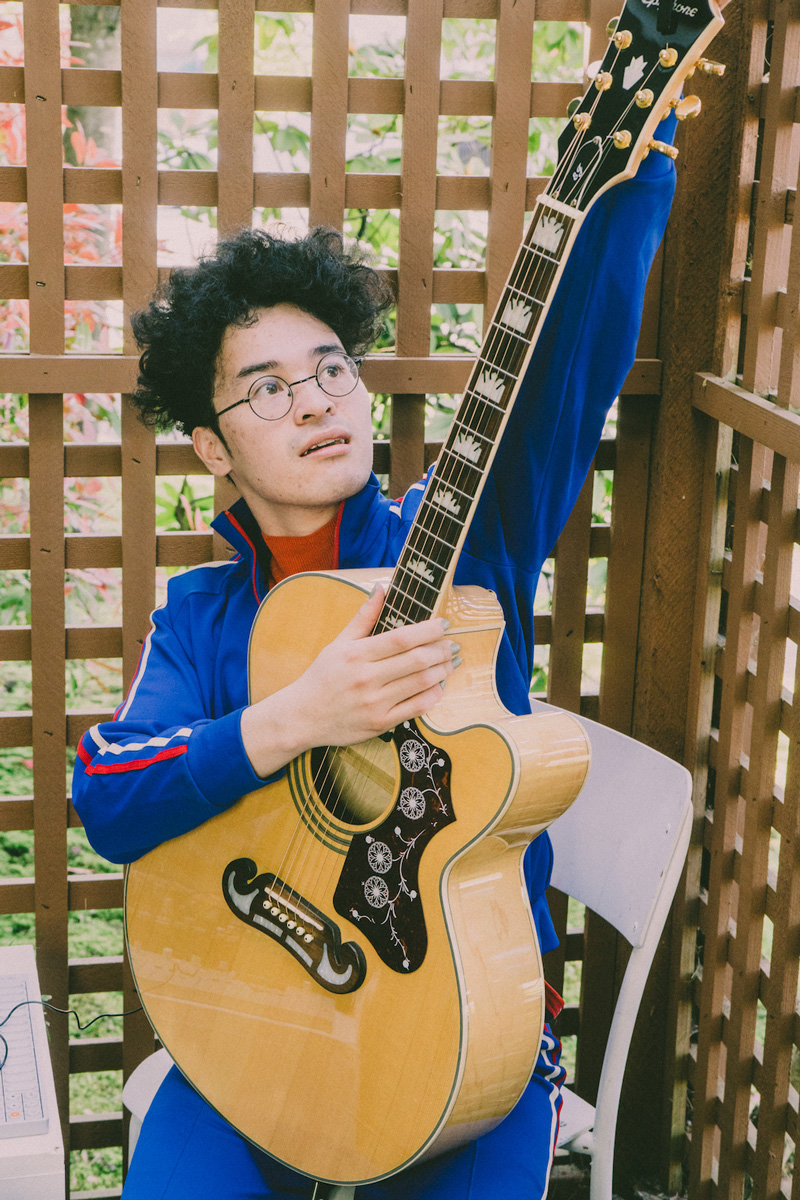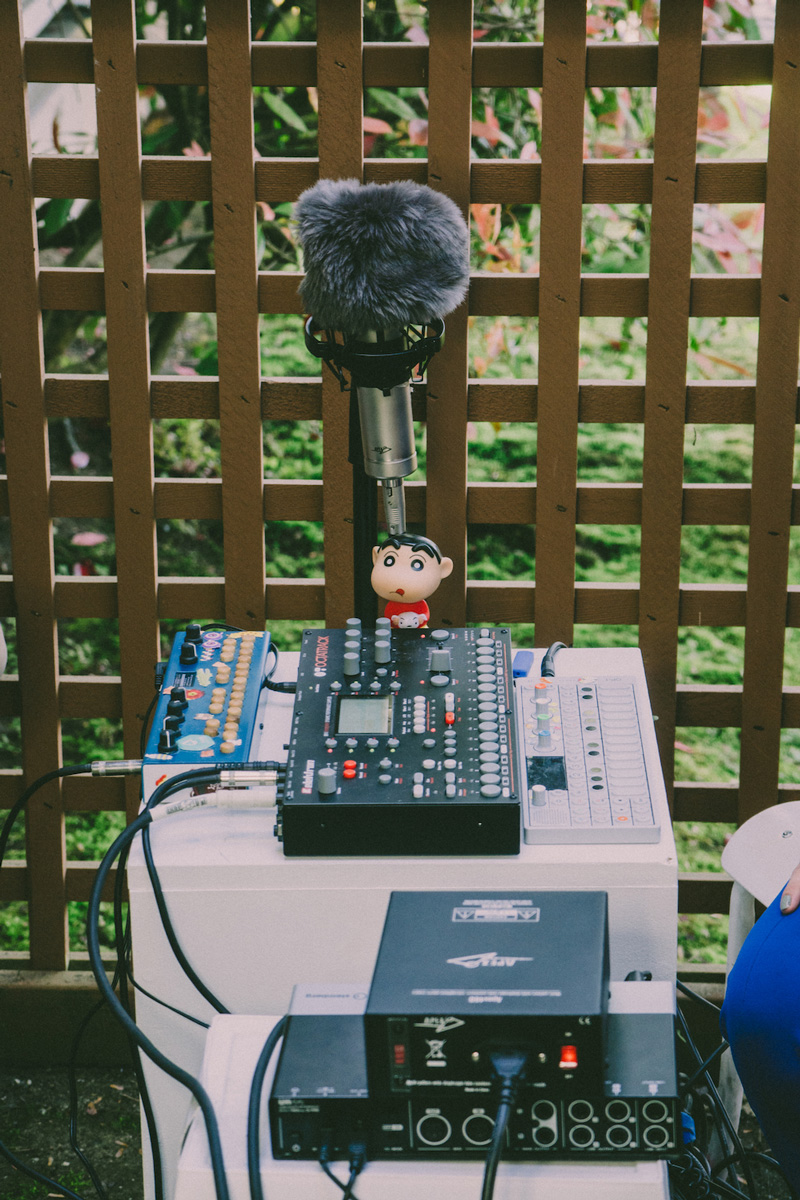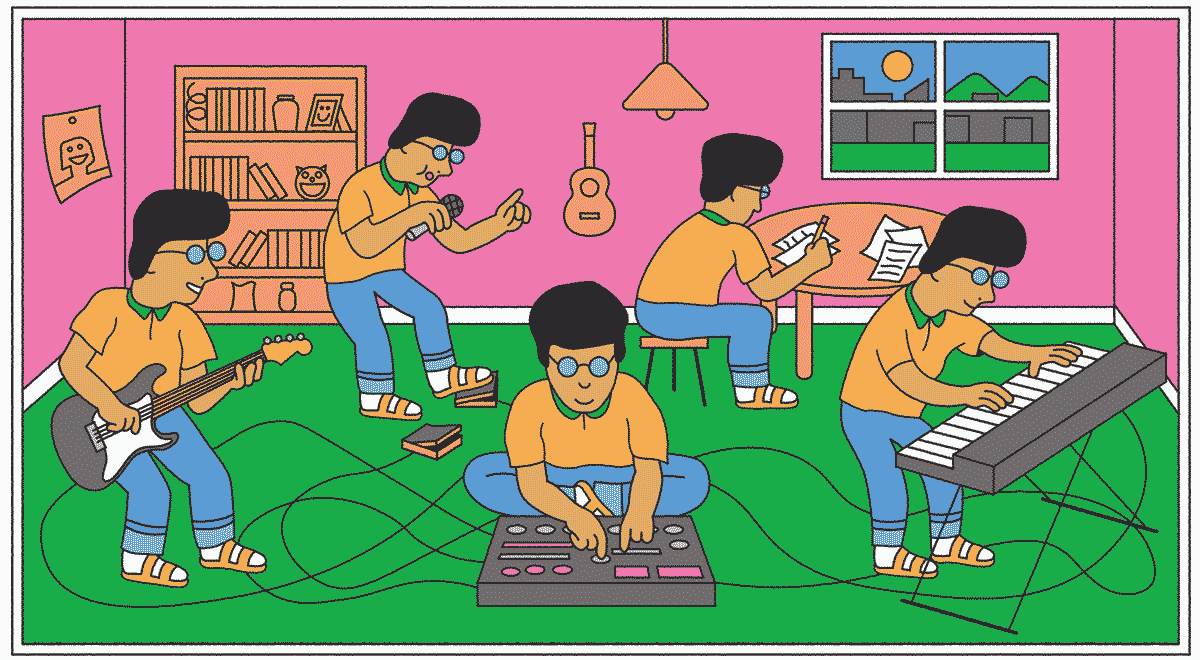The end is the beginning. The present is the past and the future. Yet, we are often presented with the concept of time as linear. This article will have a beginning, middle, and end. A song will start and finish. But for as long as time has been understood as chronological, there have been thinkers and artists who have challenged the linearity of time. Miguel Maravilla is one of those people.
“I don’t like chronology,” chuckles Maravilla. In the past four years he’s been making music, the Vancouver-based singer-songwriter has released work that is unfinished. He describes his EP TYPHOON as “an incomplete, unfinished collection of ever-evolving ideas that have since been lost to (my) time.” For those who have listened to his work, Maravilla’s music is best described as a time-soup of 60 second snippets capturing nostalgia, love, and grief. These pure and quotidian feelings, which are laced throughout his discography, can also be found in one song alone. In “believe (2017)”, he sings “I love you / and all the time that we spend / when together we are forever more / you are the one who exists out of the frameworks of time / and we spend our whole lives in the blink of an eye.” There is something about his music that stirs up the desire to live by every old adage you’ve ever learned from rom-com movies like, “Don’t cry because it’s over. Smile because it happened.” Perhaps his music feels universal the same way clichés do because there is some element of truth to them, no matter how effusive.

photograph by Zuleyma Prado
When you talk to Maravilla, you can’t help but smile. It’s difficult to pinpoint whether it’s his vibrant blue and orange tracksuit, his cutesy sticker-covered instruments, or his easygoing demeanor that makes everything about him feel warm. True to form, his fuzzy bedroom pop ballads paradoxically exist between the worlds of romance and heartbreak. Somehow he finds a way to package these human experiences into sounds that capture the warmth and angst that is often associated with youth. Maravilla calls this the “yellowness” of everything. “Yellow thought. Yellow heart. Yellow smile. Yellow skin. Yellow song,” is how he describes himself in his Instagram bio. Whether you call it confirmation bias, or a regular synesthetic encounter, yellow is precisely how it feels to enter Maravilla’s world of sounds — incandescent and inviting, yet fleeting. “For me [yellow] embodies a lot of how I felt and how I continue to feel. If I envision sound as colour, the most resonant one would be yellow…everything is yellow,” he tells me. Upon my request, Maravilla plays the colour yellow for us. He stares off into the distance with a slight smile, strumming familiar chords on his guitar, pressing buttons on what he calls a “beep-boop”, searching his busy mind for the sound of yellow. Playful and magical noises made with his ad-hoc set up linger in the air like old friends joining our conversation. Maravilla associates yellow with many things, including his Filipino ethnicity, the brightness and mellowness of the sun, and cowardice.
“I think in the beginning, and a lot of the times when I’m making music, it’s very insular. There is an ease in running to the abstract…so to rely on, or to escape to the music is kind of where that cowardice comes from,” explains Maravilla. For someone who boldly rejects the chronology of time and sings freely about loving, I was surprised to learn that he considers himself yellow-bellied. Intrigued by this new insight, I ask Maravilla what he is running from. “I think there’s a lot to hide behind when it comes to making music or being creative…I think there’s a lot of avoiding confrontation. A lot of trying to run away from things, trying to hide,” he confesses. To the keen ear, it may be possible to hear this element of cowardice in his music. “My songs usually sound like they’re running. Running away, running to somewhere.” For Maravilla, developing as a musician is not only about mastering his craft. While there is ease in using music to escape, he chooses to ground himself in shared experiences with others in order to flourish as an artist. “The most growth I find in music is everything outside of the music, where my interactions with people help me to grow…and I think, going back to experiences with people informing my work, it’s outward,” Maravilla shares with me. As he answers one of my questions, his eyes tell me he has already moved onto the next idea. Despite his tendency to get lost in his insular world of thoughts about time, finality, and yellowness, he is far from conceited.
Maravilla and his music can only be described as generous. He cares about how he can break down barriers to making music, how his work can contribute to political resistance in his community, and how he can share his profound feelings about life and time with the world. Inspired by the work of revolutionary Filipino activists, Maravilla strives to create music for the people. “Part of what’s been so educational and informative for me is learning from Filipino activists — especially in the Philippines. A lot of them have really defined and committed their idea of art-making, of building culture, purely as a vehicle for the masses,” he explains. In this moment, Maravilla’s guitar playing slows to a pause and there is a seriousness in his voice that is pregnant with determination. “I’m hoping that what I make now is almost like a megaphone for the voices of so many people. Where that just projects the desire, the longing, the dreams and ideas that so many people have. I think that is the most confrontational approach I can have to music. It’s as real and tangible as it can be.”
Though Maravilla talks about his goal of creating music for the people as something he hopes to achieve in the distant future, he is already producing this work. His most recent piece “Panawagan” is a superlative example. Created for the Media Arts Committee Sonic Memories residency, “Panawagan” is a sonic collage of archival clips documenting the history of colonization in the Philippines and the people’s revolutionary resistance to it. “I feel like the primary point I was trying to drive home was, when interacting with archival work, it’s so easy to fall into the trap that you’re interacting with [what is now] history. People usually think it’s something that’s already passed. It’s something that isn’t present anymore. It exists backwards in time. When in reality, this music and the voices of the past haunt the collective memories of Filipino people today,” he contemplates. To Maravilla, the relevance of Filipino activists’ voices from 50 years ago to the current political situation in the Philippines today is a sign of its urgency. “The voices that I sample, these are very real voices from real people whose conditions were very real…they call out for liberation, for justice, for freedom from a very oppressive system,” he continues. Through sound, Maravilla bends time to fuse the past and present into a weapon of resistance. “Having that sample of someone saying that in the 1970s is one thing, but to reactivate it and use it again, I’m interacting with it today in 2021. The reason I’m doing that is because it’s still relevant, and these voices still have so much to inform about the present.”

photograph by Zuleyma Prado
Time is Maravilla’s teacher and muse. “I have so many overwhelming emotions when it comes to thinking about time. You don’t have to consider it chronological, because you can learn so much from the past, and you can learn so much from the future in the sense that there’s so much to yearn for, there’s so much to lose. And all of those things will inevitably happen,” he tells me with enthusiasm. Some of Maravilla’s favourite books of all-time are literally all about time, including Slaughterhouse-Five, House of Leaves, and Extremely Loud and Incredibly Close. Without skipping a beat, he tells me why he loves Slaughterhouse-Five so dearly: “[T]here are these aliens who see time happening all at once. Rather than time being a chronological sequence of events, they see everything at the exact same time. Moments are just crystallized and you can kind of pick apart each moment as its own thing. I find that so beautiful.” In fact, he has a soon-to-be-released song titled after the alien planet in Vonnegut’s novel: “Tralfamadore.”
Maravilla loves to create unfinished things. “I think that’s the best thing about making anything, really, is that it’s never finished…so all my work is unfinished.” In protest of the need for finished things, he embraces the idea of intertextuality. “Everything is just a continuation of everything else. Or, I guess, things can be continuations. So I feel like everything that I make already exists — I’m just adding onto it,” says Maravilla. “Sometimes the best thing I could think of saying was already said by someone else, so why not just repeat that. Or find a way to reiterate that, because it was already, you know, such a precious idea,” he continues. “Tralfamadore” is a true embrace of intertextuality. The song begins with an effervescent and energetic intro that resembles the unmistakable opening of “Fireflies” by Owl City. Carried by a bubbly beat, Maravilla sings as if he were an alien from Slaughterhouse-Five: “we see time in three dimensions / and when we feel the need to / we resort to its suspension.” Surprisingly, he tells me that “Tralfamadore” is probably the first song he’s ever finished. What makes this song finished amidst his body of unfinished work? “I think the thing that makes it finished is that moment where I admitted that it will never be finished,” he explains. With a few taps on his MIDI controller, echoey electric keys undulate through the air while Maravilla continues to ponder. “That’s when I know it’s done. When it can really live its own life and really exist beyond my control. I can’t dictate how I think it will be anymore, and it’s up to whoever else receives it and continues that text. It’s up to them to decide how finished it is or whatever. And then it can just be.”
Maravilla left me questioning whether our conversation was finished. But if there’s anything I’ve learned from him, it is that something is finished when we accept that it will always be unfinished. Our conversation ended the way it began: a moment in time with some semblance of finality, ready to be revisited, continued and reiterated.
♥
While this published transcription is great, we invite you to tune in to CiTR 101.9 FM on June 30 and July 7 at 7 PM to hear the conversation between Maravilla and Lau in all its multimedia and musical glory.


